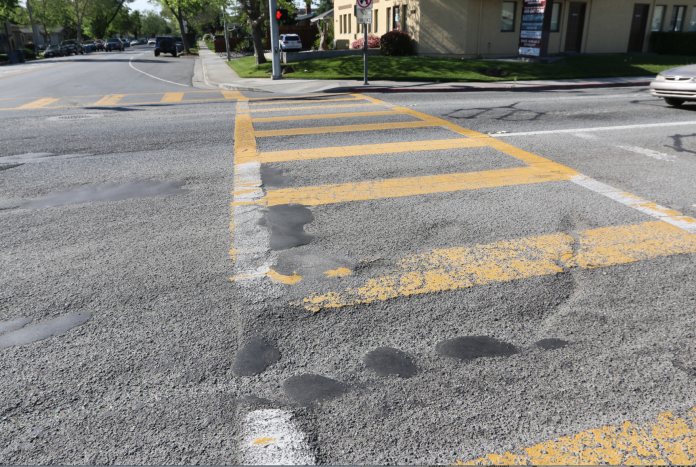Measure B, the proposed half-cent sales tax for Santa Clara County transportation, will generate $6.3 billion, plus an estimated $3.5 billion in possible matching funds over a 30-year period.
The funds are to be used for critical transportation projects across the region, which has seen significant growth over the past 10 years, putting strain on the roadways, interchanges and transit services that its nearly 1.9 million residents rely on.
The measure, which requires two-thirds voter approval, is also estimated to generate $15.4 billion in economic activity and support nearly 4,000 jobs, according to a new report by The Bay Area Council Economic Institute.
Santa Clara County is not alone in looking to generate revenue to fix potholes via the ballot box. Santa Cruz, San Benito and Monterey counties all have similar transportation sales tax measures on their local ballots.
In Santa Clara County, the lengthy process to identify all the projects to be included in the measure began in the summer of 2015, when the VTA made a request for infrastructure projects to the county, all 15 cities and towns and Caltrans. The projects were then scored and posted on the Envision Silicon Valley web page.
At the end of the process, more than $48 billion in transportation projects were identified.
Gilroy City Councilmember Peter Leroe Muñoz said the amount showed how state and federal governments have not adequately funded the county’s transportation infrastructure and that “we need to take measures into our own hands.”
Sales taxes, however, are typically viewed as being regressive, since they are a consumption tax and tend to affect moderate- to low-income individuals the most. Yet, according to County Health Rankings, Santa Clara County has the highest median household income of any county in California at $84,741.
In 2014, Gilroy failed to pass its own local sales tax increase—Measure F, promoted by former mayor Don Gage as a way to fund quality of life initiatives in the city, including fixing the city’s roads and sidewalks.
Two years later, where there was once rancor, there appears to be wider support for a countywide transportation sales tax increase, which has been noted by one of Measure B’s major proponents, the Silicon Valley Leadership Group. The group’s literature reads: “Uncommon allies united for a common goal: relieve traffic repair our roads. That’s why the League of Women Voters, Gilroy and Morgan Hill Chambers of Commerce are championing Measure B.”
If passed, the measure stands to benefit Gilroy by funneling about $1 million per year to the city for street maintenance. Gilroy usually spends about $300,000 annually on street repairs and Measure B funds cannot be used to replace this expenditure.
There will also be increased capacity on Caltrain including additional roundtrip service from Morgan Hill and Gilroy to San Jose and highway interchange improvements for US 101 at Route 25 and a new interchange for US 101 at Buena Vista.
There will also be additional bicycle pedestrian improvements, especially near schools.
For more information on the projects included Measure B, go to: http://www.vta.org/envision-silicon-valley/envision-silicon-valley.















